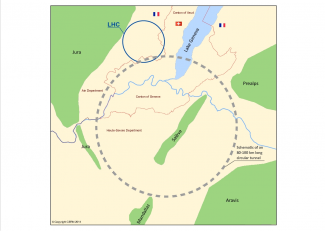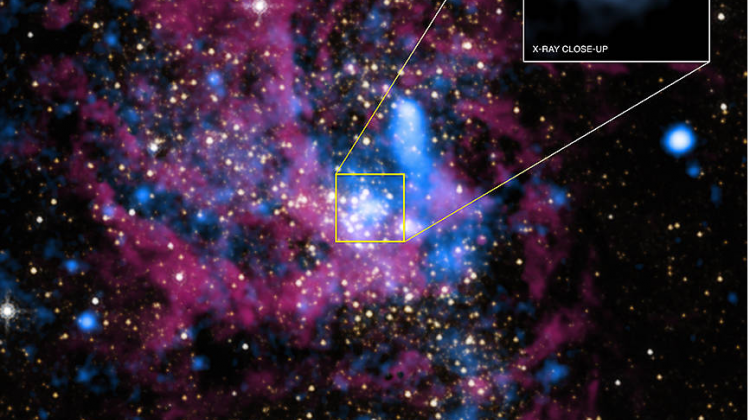Elementary particle accelerators are one of the fundamental instruments to study the structure of matter and the forces that hold together. Their task is to accelerate elementary particles (mainly protons) to speeds close to the speed of light, which translates to significant energy density of the particle beam. When their energy reaches the intended level, collisions occur as a result of which new elementary particles are revealed. It allows the scientists who study their properties (mass, velocity, energy, etc.) to verify the existing theories reflecting the current state of our knowledge.
Today, the largest subatomic particle accelerator is the Large Hadron Collider (LHC). It was intended to enable more advanced research - compared to its predecessors, and above all, to enable the detection of the Higgs boson also known by its nickname, the God particle. The particle was the missing element in the Standard Model - a theory describing everything we currently know as far as particle physics goes, i.e. the properties of all known elementary particles and the forces that hold between them. Higgs boson is responsible for giving mass to elementary particles. This goal has already been accomplished, which was recognized with the award of the Nobel Prize in Physics to Peter Higgs and Francois Englert in 2013.
Even more luminosity
Since January of this year, the LHC is in what is called the Long Shutdown. During the two-year break, a project to increase the accelerator's luminosity will be implemented. The project is named the High-Luminosity LHC (HL-LHC). Luminosity is the measure of the number of elementary particle collisions in the accelerator, which has an impact on the number of observations made. From the vantage point of physics, the higher the luminosity, the more detailed the statistical analyses of the observed phenomena are because more input data are available. These statistical analyses can be used to confirm or reject hypotheses put forward by scientists. The HL-LHC luminosity is expected to be ten times higher.
From the vantage point of engineering, the improvements and upgrades will be carried out over 1.2 km of the accelerator's length (LHC circumference is 27 km) and will be performed on all major systems (cooling systems, vacuum systems, particle trajectory tracking systems, superconducting magnets). As for the superconducting electromagnets, it will be the first time that a new type of superconductor will be used (a compound of niobium and tin – Nb3Sn), which entails intense research and development effort due to its properties. Additionally, the modernization is going to include detectors recording elementary particle collisions as well as the previous accelerators used during the intermediate stages in the development of the LHC.
Some of the works will be carried out during the Long Shutdown, whereas the second phase of the revamp has been planned for the years 2024-26. The HL-LHC will start operation in 2026 and will continue to operate until 2038. The construction of another accelerator is expected to proceed concurrently. Until then, a new accelerator needs to be completed to ensure research continuity.
Research precision vs. new discoveries
Actually, in the world of particle physics, extensive consultation concerning the construction of a new accelerator are currently under way. In 2020, a decision is expected on the direction of research in this field. Two major options are being considered, i.e. another circular accelerator or a linear accelerator.
The Future Circular Collider (FCC) is a design of the construction of an accelerator with a circumference of 100 km to enable collision energies of 100 TeV (just as a reminder: they are 14 TeV for the LHC). The FCC poses a number of engineering challenges: tunnel construction, manufacturing main components (including superconducting electromagnets, detectors), ensuring sufficient power supply, etc. Realization of such a humongous project entails astronomical costs (tens of billions euro). Hence the idea to first build an accelerator to collide electrons and positrons, in which case, the major cost would be incurred by the construction of the tunnel yet the cost of the required instrumentation would be significantly lower. Next, the existing tunnel could be used to install superconducting electromagnets with its power supply and cooling systems inside it, which would make it possible to continue research with even higher collision energies. It is worth pointing out that this approach has already been successfully applied in the case of the LHC which exploits the tunnel of its predecessor – LEP (Large Electron-Positron Collider).
In 2012, a report on the concept for the construction of a linear accelerator named CLIC (Compact Linear Collider) was produced. The CLIC is to be 54 km long and is suppossed to colide electrons and positrons at energies in the order of magnitude of several TeV (similar to the LHC). This project also entails significant costs which could be spread over time if it its length were gradually increased. Linacs allow scientists to conduct detailed studies of the properties of the subatomic particles that have already been discovered, whereas synchrotrons allow them to discover new particles due to the higher collision energies.
Thus, where are you going?
At this time, it is hard to state unequivocally which option should be pursued as each of the solutions entails a number of engineering challenges. In addition, from the point of view of physics, there is a lack of clear indication that the intended level of collision energies will actually allow for the detection of yet unknown particles. Regardless of which option is chosen, the advancement of this field of basic research has the potential to make a significant impact on the population. CERN technologies can be applied in innovative cancer therapies and medical imaging. Cooperation with industry is also meaningful as it supplies innovative solutions to meet the needs of physicists. At CERN, next generations of engineers and researchers are trained while the research there conducted are global by nature. I strongly encourage you to keep track of news reports concerning this area because in the next few years, a strategic direction for particle physics for the next several decades shall be decided.





